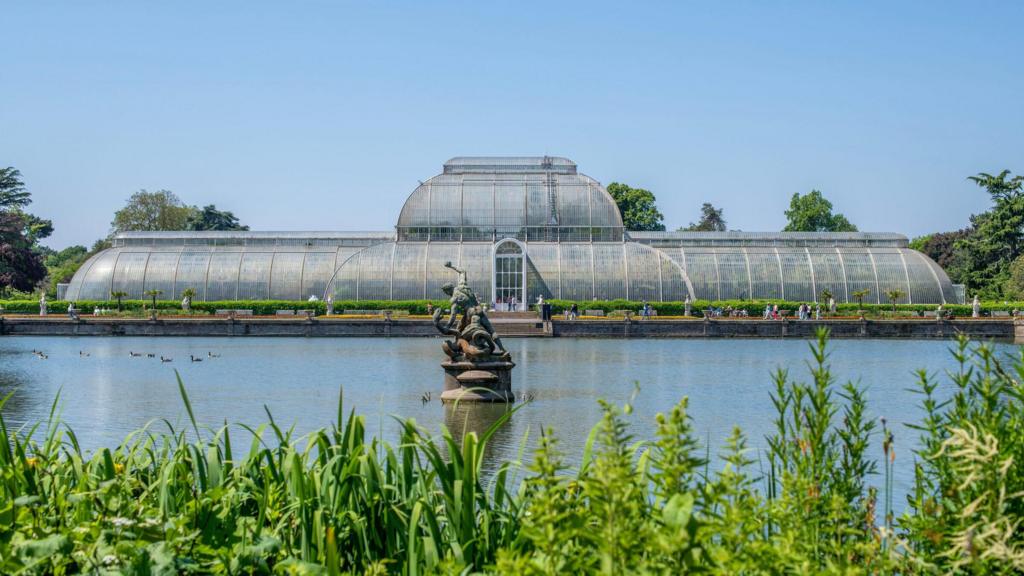A massive undertaking is underway: the relocation of 1,300 plants, the replacement of 16,000 glass panes, and the restoration of hundreds of tons of iron.
This marks the ambitious £50 million renovation plan for the world-renowned Palm House, a centerpiece of the Royal Botanic Gardens, Kew.
The building, inaugurated in 1848 and home to a tropical rainforest, has suffered the effects of the hot and humid interior climate.
Kew aims to leverage the refurbishment, which will necessitate a five-year closure starting in 2027, to achieve net-zero emissions for the Palm House.
Planning permission has been submitted, and the relocation of plant life from the indoor tropical rainforest has commenced.
“This plant is probably my greatest concern regarding the move,” states Thomas Pickering, Head of Glasshouses.
He is positioned next to one of Kew’s most valued specimens: Encephalartos altensteinii, a species of cycad.
This particular plant, cultivated in a pot, predates the Palm House at 250 years old. It is also remarkably large, weighing over a ton and reaching a height of approximately 4 meters.
“Its immense size is a challenge. The root ball carries significant weight, and the exceptionally long stem has aged considerably due to the plant’s slow growth rate,” Pickering explains.
Horticulturists will employ scaffolding, supports, and braces to ensure the plant’s protection during relocation. Other, more manageable plants have already been transferred to a temporary greenhouse.
“This will be a protracted project,” Pickering notes.
“Over the next two years, we will select plants for containment (potting) and preservation, propagate others, and, regrettably, fell some that cannot be moved.”
Constructed over 175 years ago, the Palm House represented a marvel of the Victorian era.
The scale of the glasshouse was unprecedented, requiring engineers to adapt techniques from the shipbuilding industry.
While the structure was last renovated in the 1980s, extensive rust now necessitates stripping the ironwork to bare metal for repair and repainting.
All of the single-glazed glass panes will be replaced, and tests are underway to determine the most effective glass for insulation.
Maintaining the Palm House’s 21°C temperature requires substantial energy. The current gas boilers will be replaced with air and water source heat pumps.
“Achieving net-zero status for this building is an extraordinary challenge,” remarks Rachel Purdon, Head of Sustainability at Kew.
“By implementing measures like sealing the glass and upgrading the heating systems, we can significantly reduce the carbon footprint and enhance the Palm House’s sustainability without compromising its aesthetic appeal.”
The Water Lily House, adjacent to the Palm House, will also undergo renovation. Both will remain open to the public for the next two years before closing for the duration of the work.
The Kew team acknowledges the significant undertaking and its temporary impact on visitors. However, they assure that the outcome will be worthwhile.
“The primary goal is to ensure the structure’s longevity, minimizing the need for future refurbishments,” states Rachel Purdon.
Sign up for our Future Earth newsletter to keep up with the latest climate and environment stories with the BBC’s Justin Rowlatt. Outside the UK? Sign up to our international newsletter here.
An £50m plan to renovate the world-famous Palm House at Kew Gardens is set to take place.
More than 670 individual butterflies have been recorded at Kew Gardens since April.
Heather Taylor, known as the plant doctor, said the time you water can be critical.
The glasshouses at Birmingham Botanical Gardens are Grade II-listed.
The Planning Inspectorate turns down an appeal to run the heat pumps 24 hours a day, due to noise.

